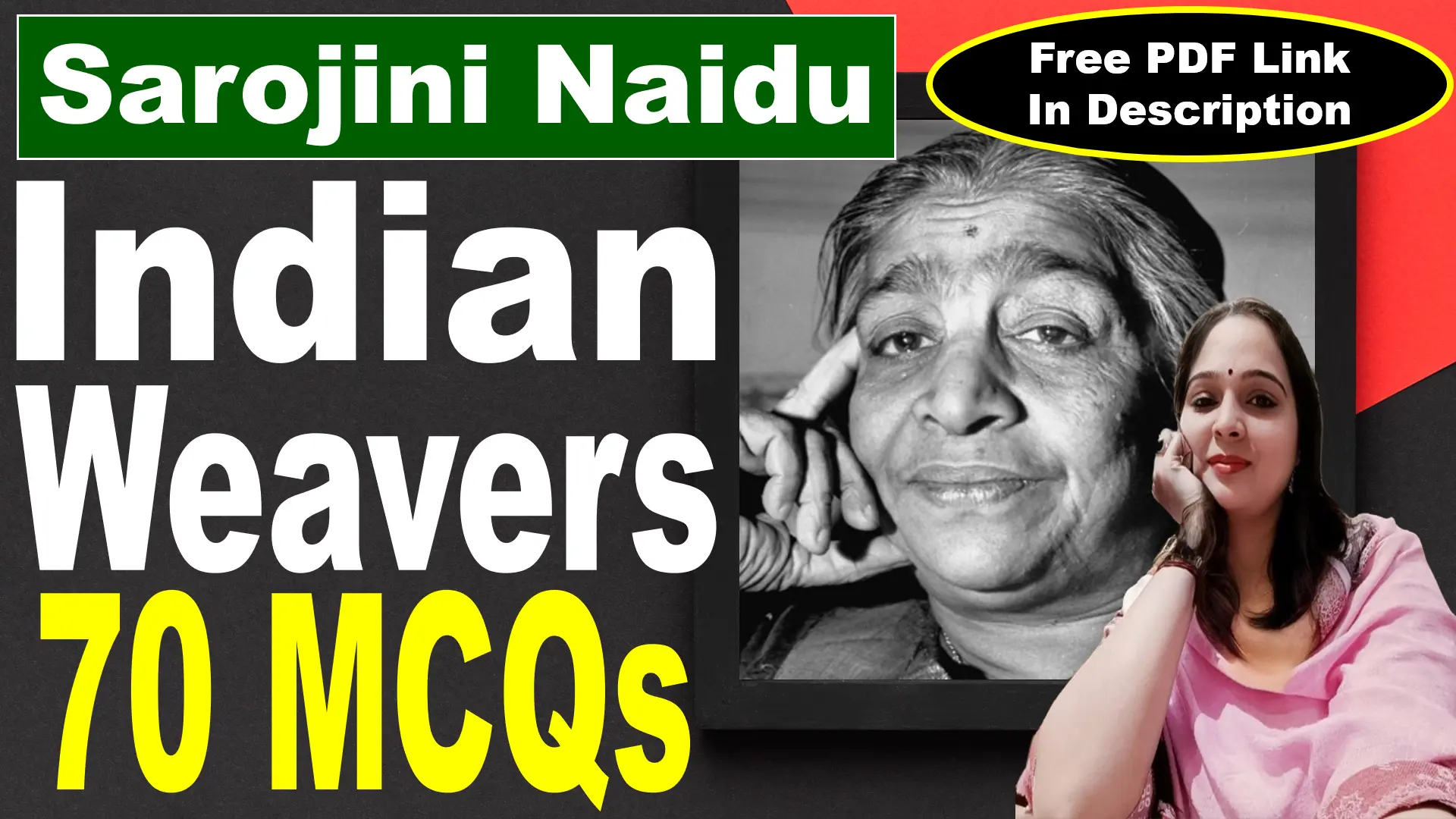
Key Points
Author
Vinayak Krishna Gokak (1909–1992): A prominent Indian poet, writer, and academic who wrote in English and Kannada. Gokak’s works often blend Indian spirituality with modern philosophical ideas, as seen in this poem.
Form (Rhyme Scheme)
The poem is written in free verse, without a fixed rhyme scheme or metrical pattern.
The lack of rhyme complements the cosmic, fluid, and ever-changing nature of the poem’s theme, reflecting the “unending flux” of the universe.
Speaker
The speaker is a reflective, omniscient observer, narrating the cosmic events and providing insights into the mystical relationship between Siva and Parvati.
The tone is philosophical and meditative, inviting the reader to contemplate deeper truths about time, love, and creation.
Setting
The poem is set in a cosmic realm, transcending ordinary space and time. It describes Siva’s dance as a metaphor for the universal cycles of creation and destruction, placing it in a metaphysical and mythological context.
The setting shifts between Siva’s dynamic dance and Parvati’s introspective realization.
Theme
Cosmic Creation and Destruction: Siva’s dance symbolizes the eternal cycles of the universe—creation, preservation, and destruction.
Illusion vs. Reality: The poem explores how surface appearances (the dance) can obscure deeper truths (the dancer).
Timeless Love and Unity: Siva and Parvati’s relationship represents eternal, spiritual love and the balance of opposites.
Transcendence of Time: The poem reflects on how time is an illusion in the face of cosmic and eternal truths.
Plot
Siva’s Cosmic Dance: Siva performs a powerful and rhythmic dance, symbolizing the cycles of the universe.
Parvati’s Perspective: Parvati watches the dance and perceives the passage of time and mortality, feeling the fleeting nature of existence.
Moment of Realization: Both Siva and Parvati achieve a profound understanding of each other’s eternal essence, shifting from the transient to the eternal.
Union as Ardhanarishwara: Siva and Parvati merge into one divine entity, symbolizing the balance and unity of cosmic forces.
Tone
Philosophical and Reflective: The poem delves into abstract and cosmic ideas, encouraging deep contemplation.
Reverent and Mystical: It portrays divine love and cosmic forces with awe and admiration.
Dynamic: The tone reflects the energy of Siva’s dance, shifting from chaos to calm as the poem progresses.
Style
Imagistic and Symbolic: The poem uses vivid imagery (e.g., “thunder and lightning”) and symbolic language to convey cosmic and spiritual ideas.
Free-Flowing Structure: The lack of a fixed rhyme or meter mirrors the continuous, evolving nature of the universe.
Mythological Allusions: References to Siva, Parvati, and Ardhanarishwara ground the poem in Hindu cosmology while exploring universal themes.
Message
The poem conveys that reality is in constant flux, and what appears stable is an illusion.
True understanding comes from transcending surface appearances to perceive eternal truths.
Love and unity, represented by the merging of Siva and Parvati, are timeless and infinite, transcending the boundaries of space and time.
The balance of opposites (creation and destruction, motion and stillness) is essential to the harmony of the universe.
Vinayak Krishna Gokak
Early Life and Education
Born: August 9, 1909, in Savanur, Karnataka, India.
Vinayak Krishna Gokak was a renowned Indian writer, poet, academic, and scholar, who wrote in Kannada and English.
He pursued his education at Karnataka College, Dharwad, and later completed his master’s degree in English literature at Bombay University (now Mumbai University). He was deeply influenced by both Western and Indian literary traditions.
Literary Contributions
Gokak is considered a significant figure in modern Kannada literature and Indo-Anglian poetry (English-language poetry by Indian writers).
His works often blend Indian mythology, philosophy, and culture with modern literary techniques, offering a bridge between traditional and contemporary thought.
Notable Works in Kannada
“Bharatha Sindhu Rashmi” (The Golden Rays of Bharath)
An epic poem celebrating Indian culture and values.
Won the Jnanpith Award in 1990, the highest literary honor in India.
“Dyava Prithvi”
A work inspired by the Rigveda, exploring the relationship between heaven and earth.
Notable Works in English
“The Golden Treasury of Indo-Anglian Poetry (1828-1965)”
A comprehensive anthology showcasing the evolution of Indian poetry in English.
He contributed significantly as a critic and promoter of Indo-Anglian literature.
“Space-Time Continuum”
A reflective and philosophical poem blending cosmic ideas with Hindu mythology.
Academic Career
Gokak served as a professor of English at various institutions, including Fergusson College, Pune and Central College, Bangalore.
He was deeply involved in academia, promoting Indian languages and literature while engaging with Western literary theories.
Role in Language Policy
Gokak played an influential role in promoting Kannada language and culture.
He was a key figure in the Gokak Committee Report (1980), which advocated making Kannada the primary language of education in Karnataka.
Awards and Honors
Jnanpith Award (1990): For his epic poem “Bharatha Sindhu Rashmi.”
Padma Shri (1961): For his contributions to literature and education.
Numerous other accolades for his work in both Kannada and English.
Philosophy and Themes
Gokak’s writing often revolves around themes of spirituality, cosmic unity, and cultural heritage.
He combined Indian philosophy, especially concepts from Hindu mythology and Vedanta, with modern ideas of time, space, and existence.
Legacy
Vinayak Krishna Gokak, a distinguished Indian writer and scholar, passed away on April 28, 1992, in Bengaluru, Karnataka, at the age of 82.
Vinayak Krishna Gokak remains a celebrated figure in Indian literature for his contributions to both Kannada and English.
His works continue to inspire readers with their universal appeal, intellectual depth, and cultural richness.
Gokak is remembered as a writer who skillfully bridged traditional Indian values with modern literary forms, making his works timeless and impactful.
Word Meaning
| Tough Word | Meaning in English | Meaning in Hindi |
| Entranced | Captivated, mesmerized, or deeply fascinated | मोहित |
| Doomsday | The day of final judgment or catastrophic destruction | कयामत का दिन |
| Dogged | Stubbornly persistent or determined | दृढ़, जिद्दी |
| Ever-varying tempo | Continuously changing rhythm or pace | लगातार बदलती हुई गति |
| Gestures | Movements of the body, especially hands, to express something | इशारे |
| Limbs | Arms and legs of a body | अंग (हाथ-पैर) |
| Thunder | The loud noise following lightning during a storm | गर्जना |
| Improbable | Unlikely to happen or be true | असंभव |
| Obscured | Hidden, unclear, or difficult to understand | अस्पष्ट, छुपा हुआ |
| Myriad fragments | Countless small pieces or parts | असंख्य टुकड़े |
| Fashioned and refashioned | Created and recreated in a new form | बनाया और फिर से बनाया |
| Successive | Following one after another | क्रमिक |
| Illusion | A false appearance or deceptive perception | भ्रम |
| Shattered | Broken into many pieces or destroyed | चूर-चूर, टूट गया |
| Unending flux | Continuous change or movement without an end | अंतहीन प्रवाह |
| Beheld | Saw or observed something remarkable | देखा |
| Eternal bride | A bride who is timeless and everlasting | शाश्वत दुल्हन |
| Primordial lover | The first or original lover | आदि प्रेमी |
| Dawning of days | The beginning of time or the start of existence | समय की शुरुआत |
| Androgynic God | A deity who is both male and female in essence | उभयलिंगी देवता |
| Eternal | Everlasting, without beginning or end | शाश्वत |
| Infinite | Without limits or end; boundless | असीम, अनंत |





